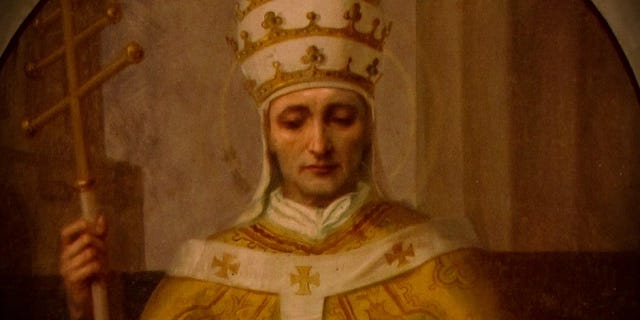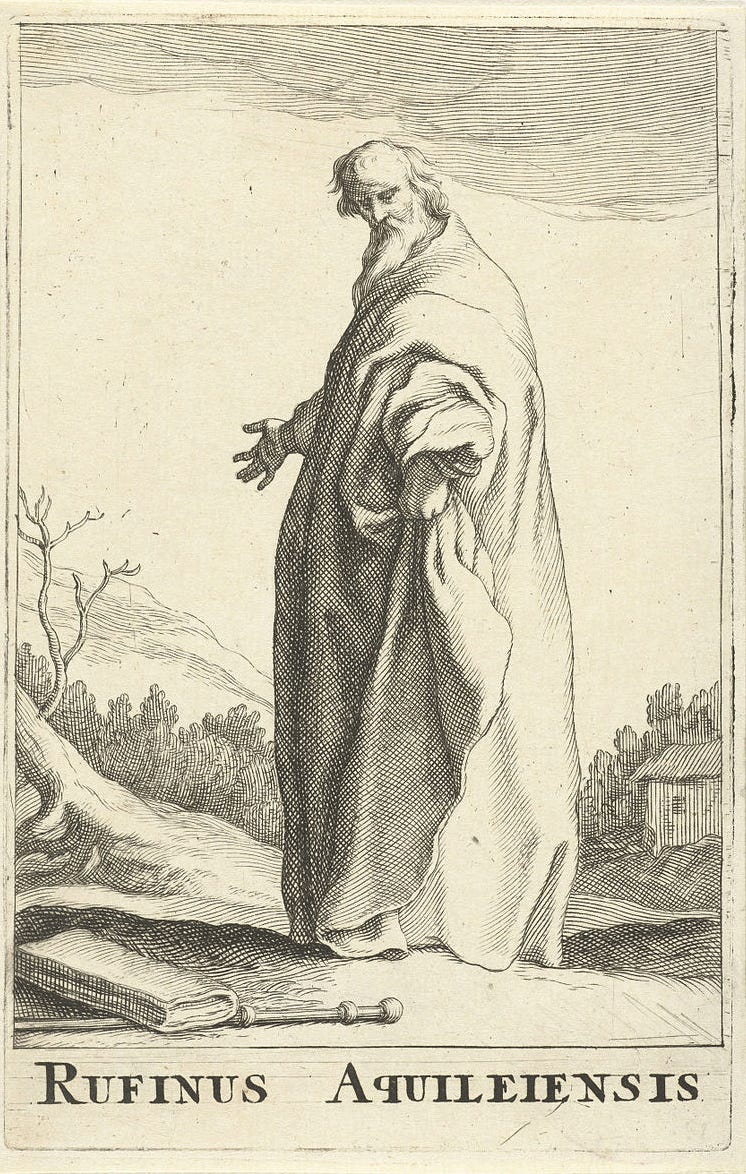Thēsauros (Part 2)
A Case for the Books "Ecclesiastical"
Last week, I began to explain the value of the Old Testament Apocrypha, explaining the crucial information it contains and how reclaiming it can assure the canon stays intact.
As I explored in Part 1, the Apocrypha contains knowledge I argue is vital to the Christian tradition. Martin Luther, the King James translators, John Calvin, and virtually every Reformer considered the Apocrypha important enough to be in their Bibles and something that is read in the life of the church. Though Bibles without the Apocrypha were seen as early as the late 1600’s, it was not standard Protestant practice until 1825!1 We’re confronted with the realization that the disregard for the Apocrypha is a very recent innovation where we are going against the grain of historic Christianity.
[The Apocrypha], the Church doth read for example of life and instruction of manners; but yet doth it not apply them to establish any doctrine. - Article VI, 39 Articles of Religion
I ended last week with a question: where do we go from here as Protestants knowing the Apocrypha is undervalued?
Via Media
I propose Protestants find a via media, or middle ground, between the previous view of the Reformers and the view that accepts the Apocrypha (or a portion of it) as inspired Scripture. A new path must be charted because, even though the origin of our tradition and all the Reformers valued the Apocrypha, their conclusion was not one that led to it standing the test of time. Conversely, there isn’t enough agreement among the Church Fathers to accept the Apocrypha as inspired Scripture.
When discussing the canon of the Old Testament from Church History, very few of the canon lists we have from the early church align completely. Even though several Church Fathers note there are books of dubious inspiration called the Apocrypha, their opinions on what was included in the Apocrypha and what was canon varies. I have created an in-depth spreadsheet from various early canon lists to illustrate this you can find here. You will want to view it to help you follow along. You’ll notice there just isn’t enough consistency from the Fathers and early canon lists to draw concrete conclusions. However, I believe the Fathers left us with a solution.
Two Streams
Looking at the spreadsheet I compiled, we can see two main schools of thought about the canon develop in the late fourth century.
Western/Eastern Skepticism Stream
The first is what I’ll dub “Western/Eastern Skepticism.” This view is represented by Fathers and theologians in both the Western (Latin) stream of Christian thought and the Eastern (Greek) stream. This stream, with Melito and the Church of his day as the foundation, accepts the protocanon - the Hebrew Bible - as canon. In this stream there is skepticism about the Apocrypha and its extent (and some about Esther, but that is for another time). The lists in this camp from the Western Church are: Melito, Origen, Cyril of Jerusalem, Hilary of Poitiers, the Cheltenham List, the Council of Laodicea, Athanasius, Gregory of Nazianzus, the Apostolic Canon of 380, Epiphanius, Jerome, and Rufinus of Aquileia. It is important to note most of these Fathers do not have identical canon lists, but all of them accepted at least the Hebrew Canon. They also expressed skepticism about certain books. We can observe this from their silence of not including them in their canon lists, as they all likely had access to the Septuagint and the entire Apocrypha, and by having diverging viewpoints regarding what the status of the Apocrypha should be. By the time Jerome speaks of the canon in the 390s, it is apparent the consensus in this stream is there isn’t an Apostolic consensus on what is regarded as the Apocrypha.
Roman Stream
The second is what we’ll call the “Roman Stream.” Beginning with Augustine of Hippo and the Third Council of Carthage (where he wielded considerable influence) we see a shift in Western Christianity away from the view Augustine’s contemporaries Jerome and Rufinus, who are skeptical of the additional writings, and toward the canon of the Council of Rome (382). This move is supported by the papacy, most clearly expressed in the canon lists of Pope Innocent I (405) and Pope Gelasius (550), which mirror Augustine’s. I speculate the shift toward this stream in the West was part of a larger shift that was occurring in the Western Church throughout the time leading up toward the Great Schism of 1054, when the Eastern and Western Church split. This shift is the reinforcement of the doctrine of Petrine Primacy - the doctrine that the Bishop of Rome (the Pope) is leader of the universal church and heir to St. Peter. If Petrine Primacy is true then the list from Rome, it follows, is surely the authoritative one.

Eastern (Orthodox) Skepticism
Meanwhile, the Eastern (Orthodox) Church, expressed by the Synopsis Scripturae Sacrae, John of Damascus, and Patriarch of Constantinople Nicephorus still seemed to reflect the earlier position of Skepticism about the inspiration of the Apocrypha through the turn of the century, calling anything not in the Hebrew protocanon “non-canonical.”2 This was until they solidified a canon later based on the Septuagint.
Some modern Orthodox writings still indicate a general recognition of a difference between the protocanon and what they call anagignoskomena, which means “worthy to be read” (a.k.a Apocrypha).3 Today, the Orthodox regard all of the Septuagint to be the “Old Testament canon,” but we can see the tradition of the Western/Eastern Skepticism influencing the distinction and Skepticism being reflected in Eastern canon lists thought through at least Nicephorus’ time as Patriarch in the 800s.4
Further unlike the Catholic Church, the Orthodox do not base their authority of what is canon on a list from a Synod, especially not Rome. Their canon is simply what is in the Septuagint - the Bible they have always had and used in their liturgy. This is an important distinction as Catholic authority comes from Rome and their council’s interpretation of tradition which reinforces Petrine Primacy. The Orthodox, firm in rejecting Petrine Primacy, derive their canon from a different tradition. Many Catholics writing on this subject will attempt to point to the Orthodox canon as proof of Apostolic consensus when criticizing Protestant’s disregard for the Apocrypha as canon, however, the larger Orthodox canon of the entire Septuagint is not the Roman canon and does not bolster their argument.
Rufinus
Borrowing on the pre-Roman/Skeptic stream, the solution is found in the church father Rufinus of Aquileia, which is clearly the middle road between the divergences we saw into Petrine and Septuagint justification. This is also the primitive Christian solution. Rufinus, a contemporary and friend of Jerome until they had a falling out, communicates to us through his writings an even more ancient position. He states there is a second tier in the canon, that of books which are ecclesiastical. This distinction is not his own, but one created by “the ancients.” As we can see on our spreadsheet, he specifically lists several of the Apocryphal books in this category.5
But it should also be known that there are other books which are called not "canonical" but "ecclesiastical" by the ancients.6
Where this ancient distinction comes from is unknown, however Rufinus was best known as a translator of earlier works, particularly Origen. Rufinus’ work is how we have access to much of Origen’s writings. Though we consider him part of the early church today, in his day he was a scholar of the earliest church and he lived and studied in both the Greek East and Latin West.
This tradition of “the ancients” could be what other writers such as John of Damascus and Patriarch Nicephorus are referring to when they say the church regards certain books to be “virtuous and noble” and non-canonical, respectively. This could similarly be referred to in the list Synopsis Scripturae Sacra, the Summary of the Holy Scriptures, from the mid-500s, and what it means by the Maccabees being “disputed” and other books being non-canonical but “to be read by catechumens.”7 Another potential reference of agreement could be Origen mentioning Maccabees as “outside these [canonical books],” especially if the “ancients” Rufinus mentions are Origen and his contemporaries.8
The prescription that the Apocrypha must be “read by catechumens” provides a great insight to the value the church should place on these books. Catechumens are initiates into the Christian faith training to be disciples, to join the church, and to receive the sacraments of baptism and the Eucharist. Why would they be instructed to read texts if the church is conflicted about their canonicity? Because, as we explored last week, the insights they offer into our faith are indispensable. The ancient church, though with differing opinions on whether these books are canon, recognized this indispensability.
Further, the ecclesiastical designation provides an answer to the question of which Apocrypha to accept: the Catholic one or the Orthodox one? By reclaiming the more ancient ecclesiastical designation, the entire Septuagint can be preserved without conflict. We are not claiming all these texts are inspired and are not entering the debate between Catholicism and Orthodoxy on canon, but instead saying simply that they are all inspirational, contain seriously important stories and wisdom, and belong to Christianity as part of our DNA. We share in this with the primitive church, removed from modern conflicts regarding canonicity and Petrine Primacy.
These texts can’t just be regarded as uninspired context for niche Protestants anymore. We also can’t sit around hoping the Orthodox preserve the entire Apocrypha. They need to be ecclesiastical, texts the Church owns. We have to say, “these are ours, a fundamental part of our history and faith.” We do not have to codify them among inspired Scripture to value them more than Mere Christianity, Pilgrim’s Progress, and other great Christian works. But we do need to have them in our libraries, in our Bibles, and need to be reading them. As Dr. Dodson goes into detail about in the interview above, entire angles of understanding about the Jesus story and the lives of the Apostles depend on us maintaining the tradition of the Apocrypha.
If we do not act, resurrection of these texts to the Protestant identity may not be possible much longer, and we may find ourselves knocking on death’s door of certain insights into the New Testament in Protestant theology.
Recommended further reading:
The Apocrypha: Lutheran Edition with Notes by Concordia Publishing House
Introducing the Apocrypha: Message, Context, and Significance by David A. deSilva
Invitation to the Septuagint by Karen H. Jobes and Moisés Silva
https://www.christianitytoday.com/history/2017/october/most-dangerous-thing-luther-did.html
See: Synopsis Scripturae Sacrae, John of Damascus’ Exposition of the Orthodox Faith, and Patriarch Nicephorus in Chronography of Nicephorus of Constantinople.
http://www.crivoice.org/creeddositheus.html
http://www.orthodoxanswers.org/canon-apocrypha-deuterocanonical-books-of-the-bible/
“But it should also be known that there are other books which are called not "canonical" but "ecclesiastical" by the ancients: that is, the Wisdom attributed to Solomon, and another Wisdom attributed to the son of Sirach, which the Latins called by the title Ecclesiasticus, designating not the author of the book but its character. To the same class belong the book of Tobit and the book of Judith, and the books of Maccabees.” Rufinus, Exposition of the Creed
http://www.bible-researcher.com/rufinus.html
http://www.bible-researcher.com/sss.html
http://www.bible-researcher.com/origen.html




